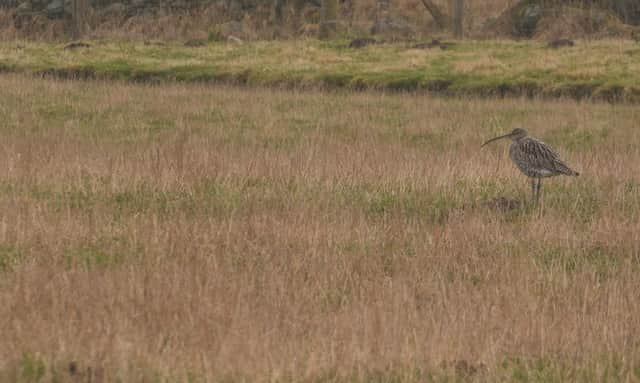Hay's Way: The cry of the curlew in Scotland is comforting and one that connects people


When people have asked me ‘what’s something remarkable you’ve come across on Hay’s Way so far’, my mind goes to the curlew.
Witnessing the threatened species hunting in the fields in herds over the past few weeks has been reassuring as conversations continue about their decline. The best areas for spotting them so far at this time of year have been along the Angus coast between Arbroath and Dundee, and in the East Neuk area in Fife.
When I first saw one, I remember thinking ‘how can evolution be so cruel creating something so lightly built with such an awkwardly long, curved bill?’ But if you’re lucky enough to get close to these shy birds, you can see why.
It’s an impressive tool that works like a pair of chopsticks to help them pluck worms from the ground.
It can be amusing to watch them as well. They are graceful in flight, but on the ground it looks like they hobble along in the grass while using their disparate beaks like a walking stick, plunging it into the earth between each step.
My favourite bit about them though, aside from their distinctive look, is their cry. It’s a shrill whistle that rises on the second note. There’s a melancholy to it that makes me think they are grieving something. In the context of their threatened existence, it’s hard to not feel a bit emotional when you hear it. But I do find the sound comforting when walking alone, knowing they’re there.
I like the way curlews approach their nests, which are usually formed in areas with tall vegetation, as if they are taking part in some cloak-and-dagger operation. They tend to land some distance from the eggs and sneak up to them through long grass to help keep their location concealed.
I feel similar when I arrive in a village with my tent on this walk. I wait for it to get dark before I tiptoe back to a location I’ve spotted in the daylight to pitch, so as to not reveal my spot, or annoy anyone.
Talking about the wader has also connected me to people. During a conversation with a fisherman on the Fife coast about how many I had seen, he replied ‘oh, the whaups?’, which I learnt is Scots for curlew.
And after telling a friend how much I like the bird’s cry, he recommended I listen to the classical piece Le Courlis Cendre, of which there are many variations, and which is french for Eurasian curlew.
Another reason why they have been on my mind is because it’s nesting season. Curlew are ground-nesting birds and therefore much more at risk of losing their young compared to their peers who nest up in trees. It’s a time of year where it’s particularly important to watch where you step and, if you have a dog, to keep it under control, when walking in the countryside. I am pretty sure when you hear their cry, you’ll want to do what you can to protect them.
Comments
Want to join the conversation? Please or to comment on this article.
